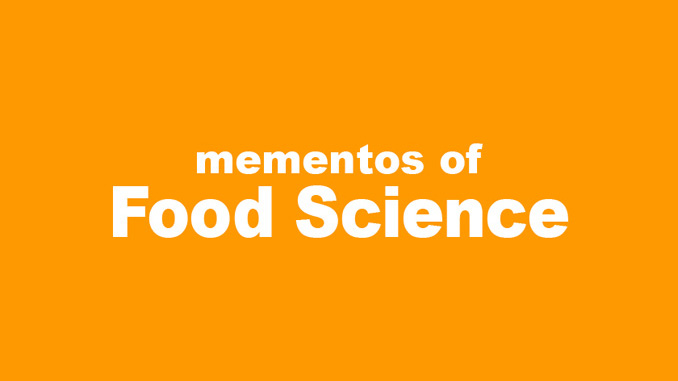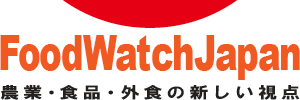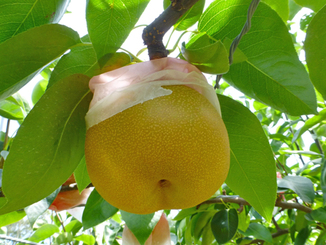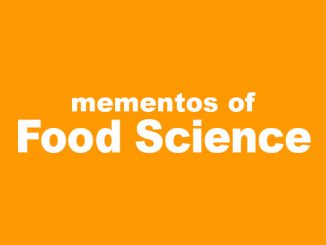
米国から輸入されてくるトウモロコシの貨物に、日本ではまだ認可されていないバイテク(遺伝子組換え)トウモロコシの品種が時折、ごく微量混入していることが報告される。日本ではまだ未認可なので、その貨物は違法となる。あるケースにおいては(例えばB.t.10)、その問題となる品種は認可もされてなければ、市場導入も目的とされていないものだったりする。それ以外のケースは、規制上の要件を米国においてはすべて満たしていたのだが、日本においては完了していなかったというものである。
Corn shipments from the United States have on occasion been found to contain small amounts of biotech corn varieties that have not been approved in Japan, making the shipment illegal in Japan. In some cases (e.g. B.t. 10) the problematic variety had not been authorized nor intended to be marketed. In other cases, regulatory requirements had been completed in the U.S. but not in Japan.
ある国では認可され、ある国ではまだ認可されていないという承認の「非同期性」から生じる後者のような問題は、Codex植物ガイドラインの新しい付属文書において、「低レベルの存在」「微量混入」、または「偶発的な混入」などと呼ばれている。前者後者いずれにしろこの問題は、貿易に重大な影響を及ぼし得るものであり、また、バイテク穀物の規制に対する国民の信頼を震撼させるものでもある。アジア太平洋経済協力(APEC)加盟国の代表者たちがつい先日、シンガポールに集まりこの「低レベルの存在」問題にどう対処すべきかを議論した。法規制に対して現実的なアプローチを取ろうとするフィリピンは、微量混入物質の安全性評価についての付属文書を含むCodexの農業バイオテクノロジーに関する基準採択に突き進んでいる。
伝統的には、農産物の商業貿易は品質特性に主眼が置かれ、国の監視はごく限られたものだ。例えばトウモロコシのような農産品は通常、遺伝学上異なったいくつかの品種のものが単一の商品として出荷される。それは多くの農家から集荷し混ざり合うからだ。しかしながら、ヨーロッパや日本、韓国などの国々において制定されたバイテク品種に対する市販前承認要求は、実質上、商品貨物の法的地位を変えてしまった。現在、ごく少量の未認可バイテク物質が貨物に含まれていることによって、輸入国ではその貨物全体が違法と見なされる。
未認可物質が貨物に含まれるのは、従来品種とバイテク品種に同じコンテナが使用される場合であるとか、または、フードチェーンにうっかり混入してしまったという場合である。加えて、新しいバイテク品種の増加とバイテク作物の生産・輸出国の増加は、微量混入の可能性がさらに増えることを意味する。Codex委員会バイオテクノロジー応用食品特別部会(以下、Codex特別部会)は、2008年にCodexによって採択された植物ガイドラインに対する付属文書を作成した。それは、微量混入物質のリスク評価を行う国々に資することを目的としたものだが、その話は米国において数年前に始まっていた。
米国の業界と貿易業者は、未認可微量混入物質のために商品貨物を抑留されることから生じる費用の増加と未認可物質の混入がないことを保証するための検査費用の問題に直面していた。米国の業界は、この問題を解決する方法を模索した。国内的には、米国食品医薬品局(FDA)が、開発途上バイテク品種の「初期たんぱく質」評価に関するガイドラインを公表した。FDAは、新たに導入されたたんぱく質が安全である、すなわちアレルゲンでも毒素でもない、と示されれば、食糧供給における未認可品種の微量混入は安全性の問題とはならないであろうと考えた。
仮に植物の遺伝子を組換えたことによって、その植物が本来持つ天然毒素のレベルが増したとしても、その新品種の混入は大きな貨物の中にほんの僅かであるのだから、すなわち希釈効果によって、その貨物由来の食品を食べたとしても健康被害はまず考えられない。FDAは企業に開発途上品種の初期たんぱく質評価を求めるよう奨励した。そうすれば、開発途上の品種が何らかの事情で米国の食糧供給に入ってしまったとしても、食糧供給の安全性には影響しないであろうから。
企業は、新しいバイテク品種を商品として流通させる前にFDAと食品安全性について十分協議をするよう求められた。業界はFDAがガイダンスの中で提示した現実的なアプローチは世界的にも役立つものであろうと考え、米国政府にCodex特別部会で微量混入物質の安全性を評価する提案を行うよう促した。
Codex特別部会は、植物ガイドラインに付加する微量混入物質の食品安全性に関する付属文書を作成した。FDAのガイダンスは研究開発途上の品種も含んだ広範なものだが、Codex特別部会はその付属文書において、少なくとも一国では植物ガイドラインに沿った食品安全性評価が完了している品種に限った。従って、開発中の品種は、そういった品種由来の物質が微量混入する可能性をはらんでいるにもかかわらず、付属書の扱い範囲ではない。
Codexの「低レベルの存在」付属書はまた、果物や野菜のような丸ごと消費される食品の主要な毒性物質を検査するよう規定している。なぜなら、天然毒素の濃度が高ければ危険だからである。付属書の最も重大な要素は、欧州連合(EU)によって提案されたデータ・情報の共有かもしれない。EUは米国の提案には全くと言っていいほど関心を示さなかった一方、企業に製品情報をもっと公開するよう強いる機会と捉えたのだ。
それによって、国連食糧農業機関(FAO)は、「低レベルの存在」付属書の利用を促進するため、Codex植物ガイドラインと合致して認可されたバイテク品種のデータや情報にアクセスできるウェブサイトを開設する予定だ。「低レベルの存在」付属書は、産業界では大きな進歩だと広く理解されている。しかし、リスク管理決定を下すうえで、各国がそれを役立つと思うかどうかは明らかでない。
FDAの初期たんぱく質ガイドラインとそれに続くCodexの低レベルの存在に関する付属書は、微量混入の安全性を立証する方法を提供したが、それでもなお各国政府はどのようなリスク管理措置が必要であるか考えなければならない。これは、バイテク物質の市販前要件を備える国にとっては厄介なことであろう。カナダ、オーストラリア、韓国政府(おそらく日本もと推測される向きも多かろう)は、Codexの「低レベルの存在」付属書の科学的根拠を支持はするが、それらの国々で未認可であれば、バイテク品種は先験的に違法であると指摘した。
米国でさえ、合法的に食糧供給の中に存在することが認められるには、農薬は米国環境保護庁(EPA)によって登録されていなければならず、食品添加物ならFDAによって認可されていなければならない。例えば、食品に使用することについてEPAに認可・登録されていないBtたんぱく質(Starlinkを思い出してほしい)は、米国において食品中に見つかれば、ごく微量であってもそれは違法である。FDAの初期たんぱく質ガイドラインに見られる柔軟性は、連邦食品・医薬品・化粧品法(前回の記事で論じた)で食品添加物認可の要件からGRAS(一般に安全と認めらる)として例外が認められる法規に由来する。しかし、その「柔軟性」は農薬や食品添加物には及ばない。
とはいえ、市販前認可を法的に義務付けている国々の場合は融通はもっと利かない。米国では、バイテク業界が低レベルの存在に関して独自の規制指針を出した。これら指針は業界各社に、バイテク品種を商業展開する前にそれが輸出されるであろうすべての国から承認を得る必要があると力説している。
中国、インドネシア、マレーシア、タイなど、バイオテクノロジーの規制制度を今なお構築中の諸国は、Codexの「低レベルの存在」付属書をそれら諸国の法律の中に盛り込むことをよしと判断するかもしれない。
フィリピンは法律を通してというよりもむしろ、一連の大統領命令の下に農業バイオテクノロジーを規制しようと決めた。フィリピンは最近、大統領命令を通じてCodexの植物ガイドラインと「低レベルの存在」付属書を採択した。このアプローチによって、政府はバイオテクノロジー政策を迅速に実施できるようになった。それでもなお、フィリピンの代表者たちは、低レベル存在の閾値定義を確立するのだということを言っていた。閾値をどこに置くのかという科学的根拠は想像し難い。Codex特別部会は賢明にも、低レベルを定義しようとしなかったのだ。低レベル存在を巡る議論はまだまだ続きそうだ。
The latter situations that arise from “asynchronous” approvals are referred to in the new Codex annex to the plant guideline as low level presence (LLP). Both situations can have major trade implications and can shake public confidence in the regulation of biotech crops. Representatives from economies of the Asian Pacific Region (APEC) met recently in Singapore to discuss ways to address LLP. The Philippines with its practical approach to regulation is moving rapidly to adopt Codex standards for agricultural biotechnology, including the Codex annex for food safety assessment of LLP material.
Traditionally, agricultural products move in commerce based on quality characteristics with minimal oversight from national authorities. These commodities (corn for example) often consist of genetically distinct varieties of the crop obtained from many farms, commingled, and shipped as single commodities. However, the establishment of premarket approval requirements for biotech varieties in Europe and countries such as Japan and Korea substantially altered the legal status of commodity shipments. Now even a small amount of unauthorized biotech material received in a shipment in an importing country (or economy, in APEC parlance that accommodates Taiwan and others) may render an entire shipment illegal.
Unauthorized material can become part of a shipment when the same containers are used for conventional and biotech material or as a result of inadvertent mixing of varieties in the food chain. Additionally, the increase in new biotech varieties and in the number of countries that grow and export biotech crops means the likelihood for LLP situations will increase. The Codex Task Force on biotechnology developed an annex to the plant guideline adopted by Codex in 2008 that is meant to assist countries in conducting risk assessments of LLP material, but the story began several years earlier in the U.S.
The U.S. industry and trade agencies faced increasing costs resulting from commodity shipments detained due to unauthorized LLP material and costs of testing commodities to ensure the absence of such material compelled. The U.S. industry sought means to resolve the issue. Domestically, FDA published guidelines for “early protein” assessments of biotech varieties under development. FDA believed that if newly introduced proteins are shown to be safe, i.e., not allergens or toxins, the presence of low level amounts of the variety in the food supply would not pose a safety issue.
Even if the genetic modification of the plant resulted in an increased level of a native toxin, the dilution effect of the small amount of the new variety in a large shipment would preclude any adverse effect on health that might result from consuming food from the shipment. FDA encouraged firms to seek early protein reviews of varieties under development so that should any variety under development inadvertently enter the U.S. food supply, the safety of the food supply would not be affected.
Firms were expected to complete full food safety consultations with FDA prior to commercial distribution of a new biotech variety. The industry felt that the practical approach put forward in FDA’s guidance could be useful in a global context and encouraged the U.S. government to introduce a proposal for assessing the safety of low level material in the Codex Task Force.
The Codex Task Force developed a food safety annex for LLP to the Plant Guideline. Rather than the broad scope encompassed by FDA’s guidance (varieties under R & D are included), the Task Force limited the annex to varieties for which a food safety assessment consistent with the Plant Guideline had been completed in at least one country. Thus, varieties still in development are not covered by the scope of the annex, in spite of the possibility that material from such varieties may become LLP.
The Codex LLP annex also prescribes testing key toxicants in foods that are consumed as whole units such as fruits and vegetables because high levels of a native toxin could be hazardous. The most significant element of the annex could be the data and information sharing element put forward by the European Union, which had little or no interest in the U.S. proposal but saw an opportunity to compel firms to release more information about their products.
Accordingly, FAO will establish a web site where data and information on biotech varieties authorized consistent with the Codex plant guideline can be accessed to facilitate use of the LLP annex. The LLP annex has been widely seen as a major step forward by the industry, but it is not clear whether countries will find it useful in making risk management decisions.
The FDA early protein guidance and the subsequent Codex annex on LLP provide a means to establish the safety of LLP but governments must still consider what risk management measures are required. This is likely to be difficult in any country (or economy) that has a premarket requirement for biotech material. Governments of Canada, Australia, Korea (and one would also presume Japan) have indicated that while they support the scientific basis of the Codex LLP annex, a biotech variety is a priori illegal in their country unless it has been authorized.
Even in the U.S., pesticides must be registered by EPA before they can legally be in the food supply and food additives must be approved by FDA. For example, a B.t. protein (remember Starlink) that is not approved and registered by EPA for use in food is illegal in the U.S., even if it is only found in trace amounts in food. The flexibility under FDA’s early protein guidance derives from the GRAS exemption from the requirement for food additive approval under the Food, Drug, and Cosmetic Act (discussed previously in this column), but that does not extend to pesticides or food additives.
Neither is it the case for most countries that have legislated mandatory premarket approval. In the U.S., the biotech industry has issued self regulating guidelines for LLP. These guidelines emphasize the need for members to obtain authorizations prior to commercial deployment of a biotech variety from all countries to which it may be shipped.
Countries that are still developing regulatory systems for biotechnology, such as China, Indonesia, Malaysia, and Thailand, may find it useful to incorporate the Codex LLP annex into their legislation.
The Philippines has elected to regulate agricultural biotechnology under a set of Presidential Executive Orders rather than through legislation. The Philippines recently adopted the Codex plant guideline and the LLP annex through Executive Orders. This approach has allowed expeditious implementation of government policy toward biotechnology. Still representatives from the Philippines have indicated that they intend to establish a threshold definition for LLP. It is hard to imagine a scientific basis on which a threshold could be set. The Task Force wisely did not attempt to define low level. The debate over LLP is bound to continue.
※このコラムは「FoodScience」(日経BP社)で発表され、同サイト閉鎖後に筆者の了解を得て「FoodWatchJapan」で無償公開しているものです。




